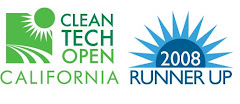by Charles W. Thurston
[from RenewableEnergyWorld.com]
Thanks to outdated design, buildings consume close to 70 percent of all U.S. energy, so it's not surprising that President Barack Obama's stimulus package includes $65 billion in funding and tax credits for green energy and energy efficiency. But the technology choices for adopting building-integrated renewable energy (BIRE) can still be awe-inspiring: should architects focus on the U.S. subsidy of $5 billion for weatherization, $4.5 billion for transforming federal buildings into green buildings or the $3.6 billion for efficiency and other savings?
"The overall green building market (both non-residential and residential) is likely to more than double from today's $36-49 billion to $96-140 billion by 2013."
-- McGraw-Hill's Green Outlook 2009
Geothermal Upstart Targets Residential Installations
Beneath virtually every building in the country, ground source heat pumps (GHPs) hold out much promise for building integrated use, especially for new buildings where drilling access is presumably easier. Indeed, geothermal could provide a leading share of the renewable mix in a modern structure. According to Patrick J. Hughes, an analyst at the Energy and Transportation Science Division of Oak Ridge National Laboratory, "If the federal government set a goal for the U.S. buildings sector to use no more non-renewable primary energy in 2030 than it did in 2008, based on previous analyses, it is estimated that 35 to 40 percent of this goal, or a savings of 3.4 to 3.9 quads annually, could be achieved through aggressive deployment of GHPs. "
One company pushing the edge of drilling technology for ground source heat pumps is GroundSource Geothermal Inc., of Redwood City, CA, which is developing shallow dry-rock engineered geothermal systems or EGS, at depths ranging between 250 and 400 feet. A 2008 Clean Tech Open award winner, the company is "testing its GeoJetter drill system, comprised of four independently-operating units that use high-pressure and steel shot to yield a finished borehole," says Dennis Murphy, the president of the company.
Unlike standard drilling, their borehole is elliptically-shaped rather than circular, reducing cuttings by 40%. While building up its capital base, the company expects to launch a pilot residential business in Northern California next year, and subsequently to roll out franchise-detailed operations across the country, he said.






No comments:
Post a Comment